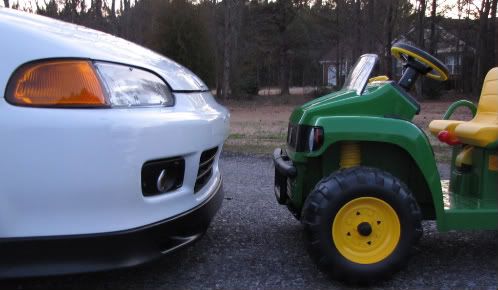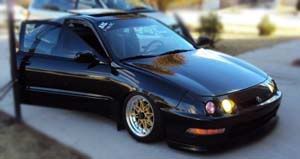wow, i read half the posts in this thread and realised there were a bunch of dumb posts.
i just put a ls crank, ls rods and type r pistons in a gsr block. i like it, you do get more bottom end......
now to anyone who says the gsr rotating aseembly is stronger, they straight need slapped.
the ls rods are made from the same material as the gsr rods, the ls rods are about a centimeter or so thicker width x width both ways. the ls rods also have more surface area on the crank for the rod bearings, you have less chance of spinning a rod bearing. <<< this is what i see by looking at it. you search the internet other people say differently. i had a chipped p28 with a type r map and 9500rpm redline, i literally beat the shit out of my car trying to spin a rod bearing. i drive to florida and everywhere else, i wanted to know if it was going to go. it didn't you don't need to get the oil squirter delete kit, but you do need to bend the oil squirters down a hair, a long screwdriver and rubber mallet will do this for you.
now, the bad thing about ls-vtec or putting a ls rotating assembly in a v-tec motor is the stroke. when turning that high of rpm's over a long period of time you can egg shape your cylinders, if you don't believe me search google, there are write ups on it.....
i used usdm type r pistons, ls crank, ls rods gsr block, and gsr head. , here is a compression calculator that will tell you the ratio.
http://tachedout.com/includes/calc.html
11.22:1 is the compression ratio for this build. with stock b16 pistons it might be a little lower.
"edit" i dunno if i said this above, i did not get my rotating assembly balanced but it doesn't idle rough or anything it sounds good. i was on a budget though and would recomend you getting yours balanced. also i did use arp rod bolts and would suggest you do the same.
another "edit" the oil squirters required being bent down about an 1/8 inch and they were in the middle of the pistons/counterweights. i would recomend using a long screwdriver to bend them down with the pistons out from the cylinder holes/top of block. when you assembly the crank and have the outside caps tight put your harmonic balancer bolt back in and rotate the crank. if they hit tap them very softly back towards the pistons. don't do a lot of bending, if they get weak you will need the block off kit, but it was really easy imo. i just tapped them all down a hair and they missed the pistons lol






 Reply With Quote
Reply With Quote







